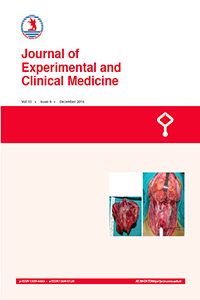Abstract
Adult mammalian skin wound repair is defective due to loss of the regulation in balancing the complete epithelial regeneration and excessive connective tissue production, and this repair process commonly results in scar tissue formation. However, unlike mammals, adult salamanders repair the wounds by regeneration compared to scarring. To elucidate the healing capability of a salamander, Axolotl, in a different species, here we addressed this question by treating the wounds in mice with Axolotl cells or tissues. Excisional lesions were created on each mouse, and animals in different groups treated by; a-) Axolotl blastema tissue, b-) Axolotl tail tissue, c-) Axolotl blastema cells, d-) Axolotl tail cells, e-) Serum physiologic, e-) Madecassol; respectively. 10 days after the treatments, wound healing success was compared by considering the wound closure rate, histopathological analysis, vascularization and gene expression profiling of cytokines. The results reveal that Axolotl cells or tissues delivered animals demonstrate an improved wound repair capacity. A better reepithelization, granule tissue formation, vascularization and even presence of hair follicles are observed in animals treated with Axolotl samples. Gene expression profiling data discloses the lower levels of pro-inflammatory cytokines in these animals which may indicate the immune-modulating role of Axolotl samples in wound healing.
Details
| Journal Section | Basic Medical Sciences |
|---|---|
| Authors | |
| Publication Date | July 3, 2017 |
| Submission Date | October 24, 2016 |
| Published in Issue | Year 2016 Volume: 33 Issue: 4 |
Cite

This work is licensed under a Creative Commons Attribution-NonCommercial 4.0 International License.


